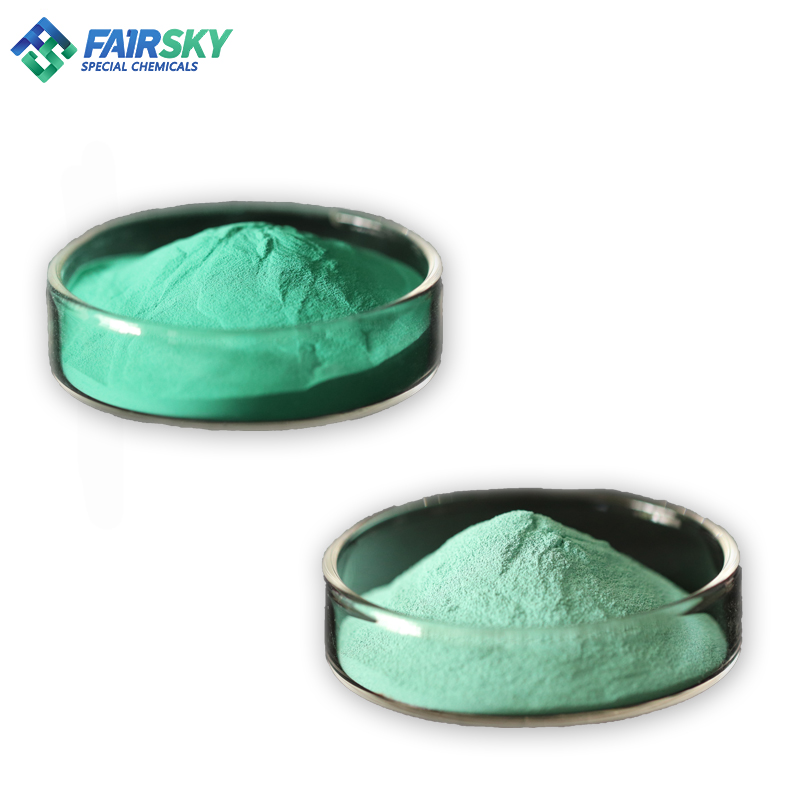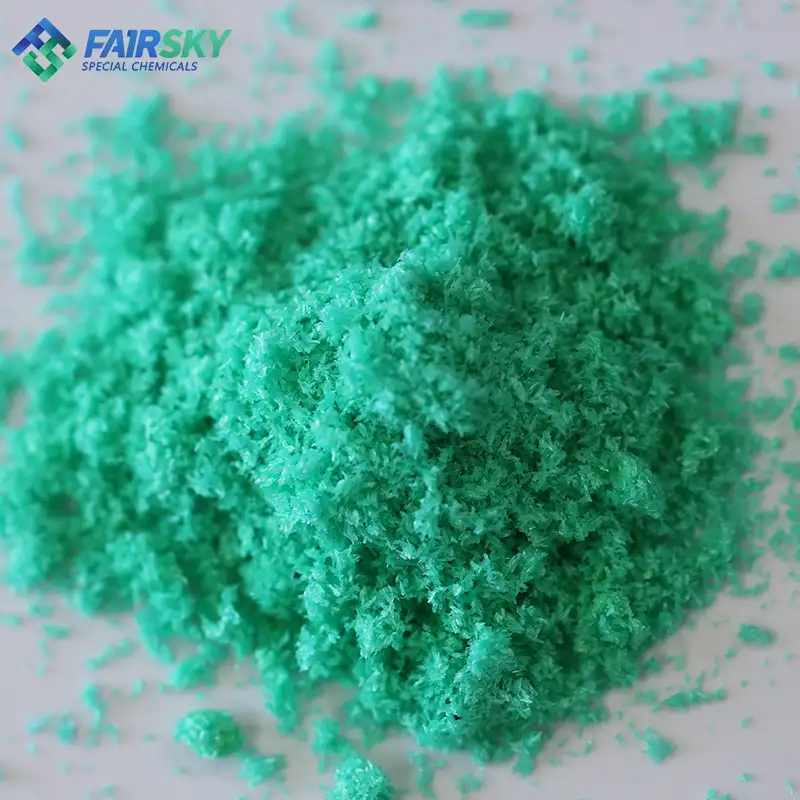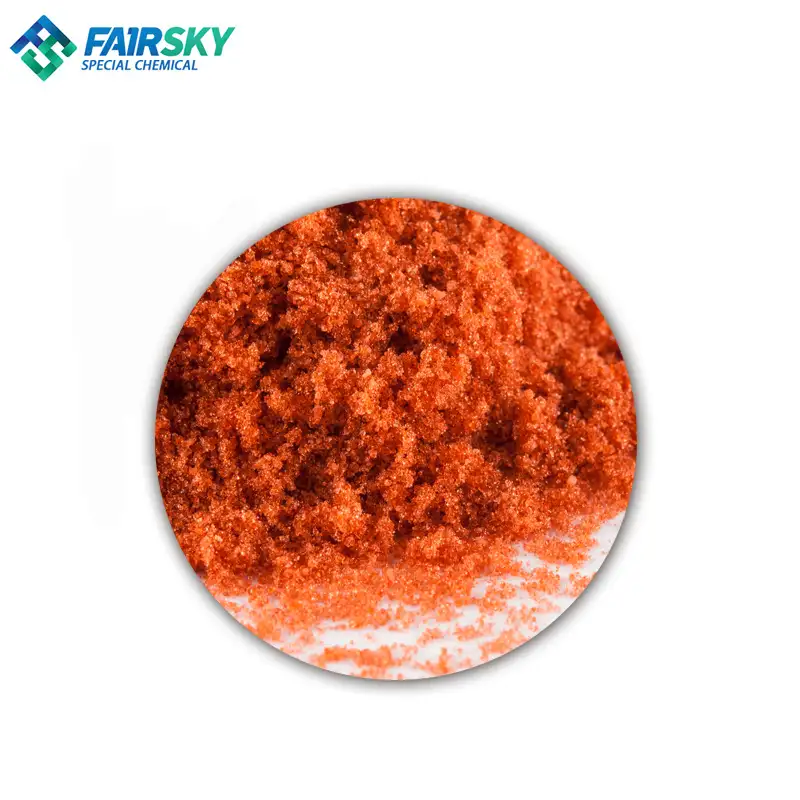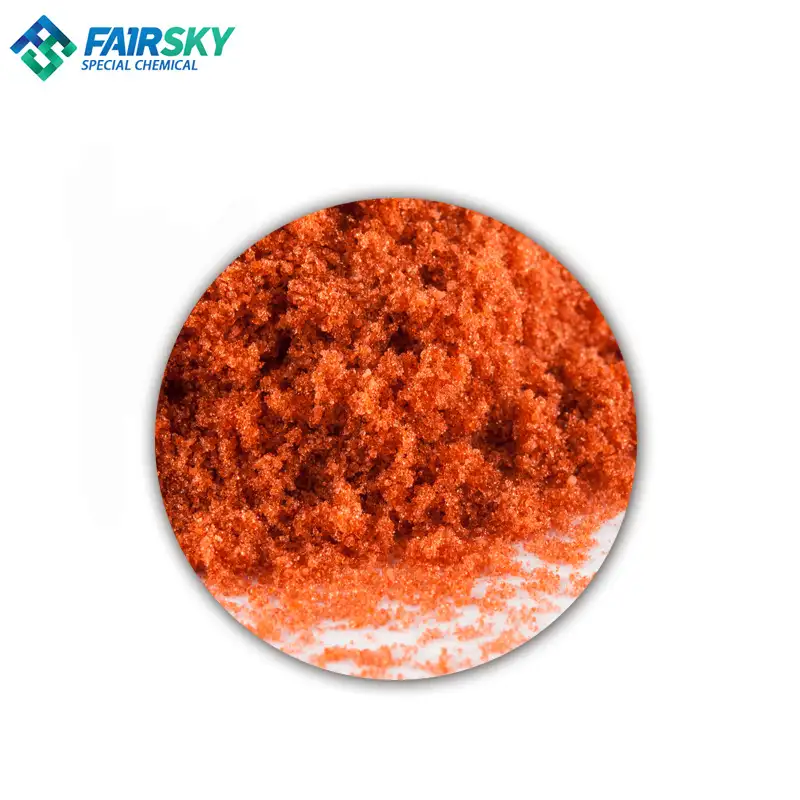Copper Carbonate,Senior Chemistry - Extended Experimental Investigations
To kill algae in a swimming pool, ionic copper and chelated copper can be used. Pool manuals and pool chemical suppliers stated that the problem with using the ionic form - copper sulfate pentahydrate, CuSO4·5H2O - as an algicide is that it does not last long in pool water. Pool water has carbonate ions (CO32-) because sodium carbonate or sodium bicarbonate is added as a buffer against pH changes. The carbonate ions react with the added copper sulfate to form a precipitate of copper carbonate: Cu2+(aq) + CO32-(aq) → CuCO3(s). Therefore, any copper ions added to pool water will be immediately precipitated as the carbonate and thus cannot kill algae.
But pool chemical suppliers say that the copper ions cwork for several hours which is enough to bust destroy the algae's cells and kill them. This shows a fascinating EEI. You could look at the rate of precipitation of copper carbonate in aqueous solution (pool water). The solubility product (KSP) of copper carbonate at 25°C is 1.4 x 10-10. The equation KSP = [Cu2+(aq)] [CO32-(aq)] = 1.4 x 10-10 means that if the ionic product of [Cu2+(aq)] and [CO32-(aq)] is greater than 1.4 x 10-10 precipitation will occur.

• RELATED QUESTION
Do zinc nitrate and copper carbonate react?
The reaction can occur. Let me explain in my view. Copper carbonate do not dissolve in water. It needs an acidic medium. Zinc nitrate dissolves in water. Now, to make reaction possible copper carbonate should be broken into ions. Now, Put copper carbonate powder and zinc nitrate powder in a test tube. Now, to dissolve copper carbonate, if we add dilute hydrochloric acid. Following reactions take place. Molecular equation: CuCO3(s)+2HCl(aq)→CuCl2(aq)+H2CO3(aq)→so, finally CuCl2(aq)+H2O(l)+CO2(g) Net ionic equation: CuCO3(s) + 2H→Cu2+(aq) + H2O(l) + CO2(g) Reaction between Zinc nitrate and copper does not occur. Because zinc is more reactive than copper in reactivity series. So, reaction (its not called reaction, see below) between zinc nitrate and calcium carbonate (in acidic medium) gives blue precipitate of copper chloride And bubbles of carbon dioxide. That's it. Now, we cant say reaction between copper carbonate ans zinc nitrate has occurred. There is no participation of zinc nitrate in reaction. Reaction has occurred only between the calcium carbonate and Hcl (aqueous medium). Hence, in my opinion reaction between zinc nitrate and calcium carbonate will not occur.
Why is copper carbonate bad for the human health?
The MSDS (material safety data sheet) lists copper carbonate as Acute toxicity (oral), category 4, harmful if swallowed. Skin irritant, category 2, causes skin irritation. Eye irritation, category 2A, causes serious eye irritation. The MSDS famously errs on the side of caution, so you can discount the hazards as “don’t eat more than a spoonful a day, don’t make a hand cream with it and it’s freakin’ gritty dust, so don't put grit in your eyes”. Copper carbonate is, of course, insoluble, but in your stomach it would react with the acid to form copper chloride and the copper would be absorbed in the gut. However, your body can handle it. Copper is an essential trace element. Chronic copper toxicity does not normally occur in humans because of transport systems that regulate absorption and excretion, and copper carbonate is occasionally used in make-up.
How do you separate sodium chloride from copper carbonate and iodine
Iodine is soluble in alcohol but not copper carbonate and salt. Dissolve iodine and filter to get salt and copper carbonate left in paper. Salt is soluble in water but not copper carbonate, so add water and dissolve salt. Filter to get salt water filtrate. Evaporate salt water to dryness.
What is the chemical name for copper carbonate?
Copper(II) carbonate (often called copper carbonate or cupric carbonate) is a blue-green compound (chemical formula CuCO3) forming most of the patina one sees on weathered brass, bronze, and copper. The colour can vary from bright blue to green, because there may be a mixture of both copper carbonate and basic copper carbonate in various stages of hydration. It was formerly much used as a pigment, and is still in use for artist's colours. It has also been used in some types of make-up, like lipstick, although it can also be poisonous to humans. It also has been used for many years as an effective algaecide in farm ponds and in aquaculture operations. “Copper in moist air slowly acquires a dull green coating. The green material is a 1:1 mole mixture of Cu(OH)2 and CuCO3:“ 2Cu(s) + H2O(g) + CO2 + O2 → Cu(OH)2 + CuCO3(s) Copper carbonate decomposes at high temperatures, giving off carbon dioxide and leaving copper(II) oxide. CuCO3(s) → CuO(s) + CO2(g) Basic copper(II) carbonate occurs naturally as malachite (CuCO3.Cu(OH)2) and azurite (Cu3(CO3)2(OH)2).
Observations of reacting copper carbonate and limewater?
When copper (II) carbonate reacts with lime water, it will create solid calcium carbonate (CaCO3, also known as chalk) and water (H2O). Limestone is mainly calcium carbonate, CaCO3. When it is heated, it breaks down to form calcium oxide and carbon dioxide. Calcium oxide reacts with water to produce calcium hydroxide. Limestone and its products have many uses, including being used to make mortar, cement, concrete and glass. Metal carbonates such as calcium carbonate break down when heated strongly. This is called thermal decomposition. Here are the equations for the thermal decomposition of calcium carbonate: CaCO3 + heat → CaO + CO2 Other metal carbonates decompose in the same way. Here are the equations for the thermal decomposition of copper carbonate: CuCO3 + heat → CuO + CO2 Notice that in both examples the products are a metal oxide and carbon dioxide. The carbon dioxide gas can be detected using limewater. Limewater turns cloudy white when carbon dioxide is bubbled through it. Metals high up in the reactivity series - such as calcium - have carbonates that need a lot of energy to decompose them. Metals low down in the reactivity series - such as copper - have carbonates that are easily decomposed. This is why copper carbonate is often used at school to show these reactions. It is easily decomposed, and its colour change, from green copper carbonate to black copper oxide, is easy to see.
How can I make copper carbonate?
I made copper carbonate by accident the other day as I was preforming electrolysis. In a water-filled container (not unlike a Hoffman apparatus), I had copper wire wrapped around two carbon rods which I used for electrodes. After sending electric current through the water for some time, the copper wire started to rust and the carbon rods began to flake. Soon enough, I had a millimeter thick layer of bright blue copper carbonate sitting at the bottom of a container. To make copper carbonate (CuCO3), you can use the formula CuO3 + C = CuCO3. Try soaking some charcoal and copper rust in water.
How do you extract copper from copper carbonate using only toothpicks... rest of the list is in details?
You need to realise that copper metal can only be obtained from copper carbonate by reduction, and that the only reducing agent that you are allowed will be carbon. I suggest you think about heating the copper carbonate to form copper oxide. Also heat the wooden splint in the absence of air to form some charcoal. Then mix up the charcoal and the copper oxide and heat.
Is copper carbonate a reactant or product?
It can be either, depending on your point of view (what exactly the system is doing). If you are precipitating copper carbonate from solution, it is a product, but if you are converting or dissolving copper carbonate into something else, it is a reactant. It depends on which way you write the reaction if you are discussing an equilibrium condition (the reaction is not proceeding in one direction or the other, but is instead in a steady state). Perspective must be defined to decide which it is.
Help with coursework about the decomposition of copper carbonate?
copper(II)carbonate → Copper(II) oxide + carbon dioxide CuCO3 → CuO + CO2 1mole of copper carbonate decomposes to give 1 mole of carbon dioxide, thus the more carbonate you use, the more carbon dioxide is formed.
Sulphuric acid and copper carbonate?
Copper carbonate reacts with sulphuric acid to form copper sulphate + carbon dioxide gas + water. (CuSO4 +CO2 +H2O)A carbonate will always react with an acid to form a metal salt + carbon dioxide + water.The metal salt formed will depend on the carbonate (in this case COPPER carbonate) used and the acid used (in this case sulfuric acid which forms a SULPHATE) which forms COPPER SULPHATE.
Why does green copper carbonate go black
Because it undergoes thermal decomposition. If you give heat to Copper (II) carbonate, it will decompose to form Copper (II) oxide. Instead of saying green copper carbonate, I guess it is safer and better to say copper (II) carbonate.
Is copper carbonate actually mineral malachite?
Actually green malachite is basic copper carbonate i.e. CuCO3.Cu(OH)2. But then since the mineral is in free state, it will contain impurities like sand and other minerals. Hope this helps...:)
Am I making copper carbonate?
It does sound as if you have introduced carbonate ions into the electrolyte, so that as soon as the copper anode dissolves, green copper carbonate forms on its surface. This will tend to stop any further electrolysis, by the way! The blue solution sounds like copper hydrogencarbonate.
Does precipitated copper carbonate contain impurities
Yes, the water contained in the freshly filtered precipitate will contain dissolved {Na2SO4}, as the latter is the soluble by-product of your double displacement reaction. To get rid of it, you need to wash your precipitate thoroughly with distilled water (pH 7). If you really want to make sure that all {Na2SO4} has been removed, you can test samples of the wash water filtrate for {SO4^2-} by adding diluted hydrochloric acid and aqueous {BaCl2}. When a white precipitate of {BaSO4} no longer forms, the aqueous sodium sulfate can be considered separated from the {CuCO3} precipitate
Why does sodium carbonate react faster than copper carbonate when mixed with hydrochloric acid?
Sodium carbonate is soluble in water, and dissociates into ions, Na+ and CO3^2-, but CuCO3 is insoluble in water and does not dissociate. This means that for equal amounts of carbonate ion from both compounds, more of the carbonate from the sodium carbonate will be in contact with the acid, increasing the speed at which it forms CO2 gas
What happens when hydrochloric acid is added to copper carbonate?
The pH goes up. HCl becomes H+ and Cl-. The H+ ions make the solution low pH or in other words High acidity. The carbonate ions chemically attract the H+ ions to become carbonic acid. However, this acid is weak and does not dissociate like HCl therefore the pH is less acidic and Higher.
Word + symbol equation for decomposition of Copper Carbonate?
Whenever you decompose a metal carbonate you get carbon dioxide (CO2) and a metal oxide. CuCO3 → CuO + CO2
How can I prove the identity of a Copper Carbonate substance?
You can establish that an unknown is CuCO3 pretty conclusively by looking at the color after adding sulfuric acid. If it is a carbonate, CO2 will be evolved. You've acknowledged that. CaCO3 will react with H2SO4 to produce aqueous Cu2+ ions which have a characteristic blue color due to the hydration of the Cu2+ ion. If there is an excess of chloride ion (presence of HCl) the solution will be green due to the formation of [CuCl4]2-. Actually, when the water ligands are replaced by Cl- ions, the solution will be yellow. But some Cu2+ will continue to be hydrated, that is, blue. So when the yellow of the tetrachloride combines with the blue of the hexaaqua, then the result is green. Like the old Zip-Lock bag commercial said, “Yellow and blue make green.“
How do you seperate a mixture containing Copper carbonate, Rice, Iron Fillings, Salt and Sand?
1 Pass through a coarse sieve (coarse enough to let the sand through; but not coarse enough to let the rice through). 2 Pass it over a sheet, under which there is a strong magnet. The magnet will hold back the iron filings. 3 Dissolve in water. The salt will dissolve, leaving the sand and copper carbonate. The water can be evaporated to recover the salt. 4 Dry the sand and copper carbonate, then place it in an organic solvent such as ethanoic acid. This will dissolve the copper carbonate, leaving behind the sand 5 evaporate the ethanoic acid to recover the copper carbonate. Solubility tables are useful for working out things like this. Edit: Thinking about it, if this is a science question, then simply sieving out the rice may not be the answer (there could always be some coarse sand particles present) In this case, it is better to leave the rice/sand separation til last; then place the mix in salty water (as much salt as you can dissolve in hot water). Saturated salt solution specific gravity is about 1.2, and for rice about 1.1, so the rice will float off.









